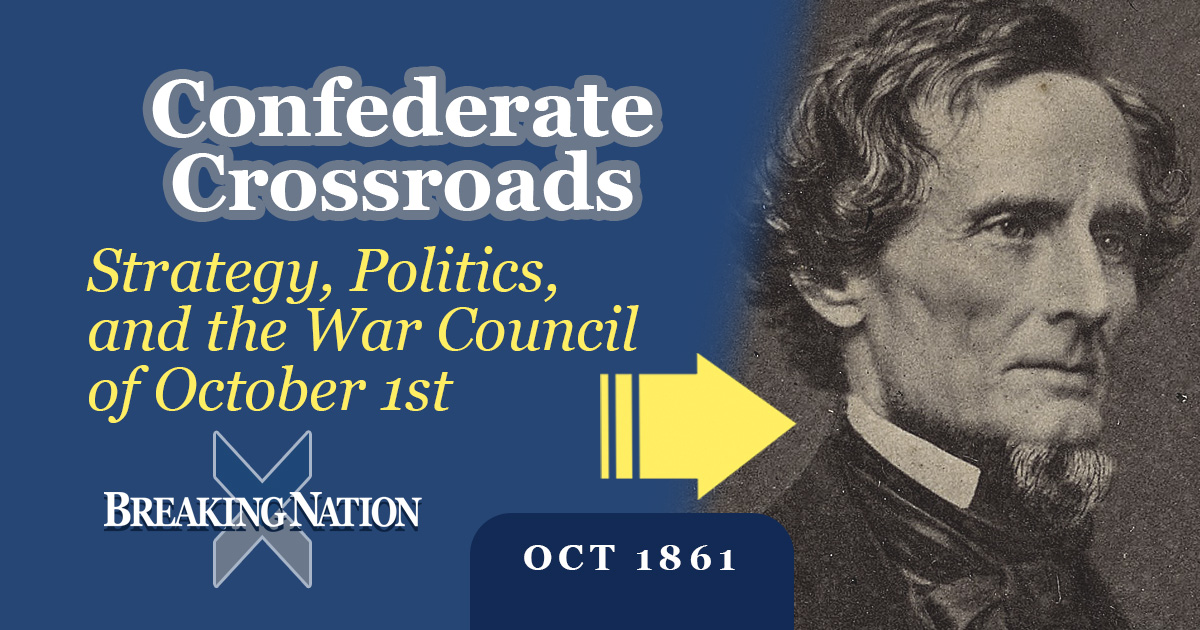Jefferson Davis’s October Council: Prelude to the Confederacy’s Struggles

On October 1, 1861, President Jefferson Davis convened a conference on Confederate war strategy with his leading generals—a moment that may not rank with the famous battles of the Civil War, but one that sheds light on how the Confederate high command grappled with the challenges of waging a national conflict. The meeting occurred just months into the war, at a time when the Confederacy was still shaping its military identity, balancing political priorities with military realities, and learning how to coordinate armies stretched across an enormous theater of operations.
The significance of this conference lies first in what it reveals about Davis’s governing style. Unlike Abraham Lincoln, who grew into his role as commander-in-chief through trial, error, and a willingness to listen to advisers, Davis entered office with a strong military background. A West Point graduate and former U.S. Secretary of War, he often trusted his own judgment over that of his generals. The October 1 meeting demonstrated Davis’s inclination to centralize decision-making and impose coherence on a war effort that risked becoming fragmented by the Confederacy’s defensive posture. With so many vulnerable fronts—from Virginia to the Mississippi River—Davis faced the dilemma of whether to concentrate forces for a bold offensive or disperse them to protect territory.
At the conference, the generals and Davis debated the Confederacy’s strategic course. Davis favored a largely defensive strategy, designed to preserve Southern territory and morale while waiting for Northern public opinion to tire of the war. Yet, some of his officers, including General Robert E. Lee (who at this point was serving in an advisory capacity rather than as a field commander), urged more aggressive maneuvers to seize the initiative before Union forces could fully mobilize. This clash between offensive and defensive visions reflected a deeper tension: was the Confederacy better served by bold strokes that might win foreign recognition, or by a patient war of endurance?
The October 1 conference is also significant because it foreshadowed the struggles the Confederacy would face in coordinating its leadership. Davis’s firm hand often bred resentment among generals who wanted greater autonomy. At the same time, the Confederacy’s commitment to “states’ rights” complicated centralized strategy, as governors resisted troop transfers and local sacrifices for national priorities. This early attempt to unify command highlighted the structural weaknesses that would haunt the Confederate war effort.
In short, Davis’s October 1, 1861 strategy conference mattered not because it produced a breakthrough plan, but because it revealed the Confederacy’s central dilemmas: how to fight a stronger enemy with fewer resources, how to reconcile politics with military necessity, and how to balance boldness with caution. It was an early test of Confederate leadership—and a preview of the challenges that would define its war.
Breaking Nation: A Civil War Podcast explores the American Civil War, its turning points, and our national memory. Discover full episodes, transcripts, and resources at www.breakingnation.com — your destination for in-depth Civil War podcast content and fresh perspectives on America’s past. Listen on Apple Podcasts, Spotify and Amazon Music.




